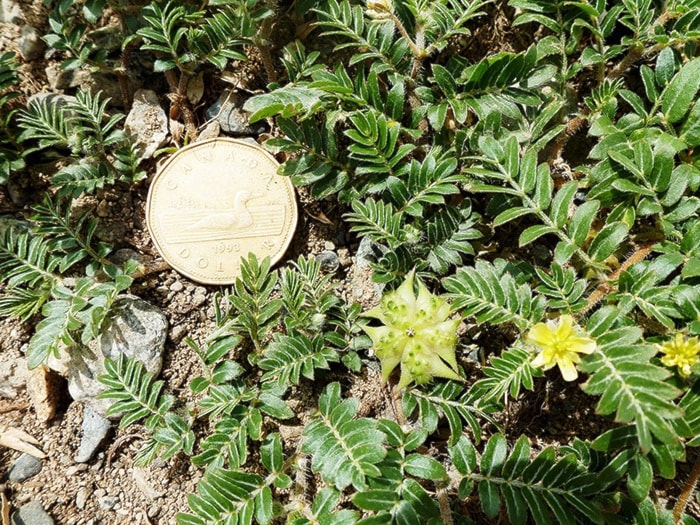Unless you are relaxing at the beach these days or in an air-conditioned building, you are likely sweltering during the summer heat. We aren’t the only ones suffering.
The hot weather can also take its toll on our garden plants and even native species can struggle during lengthy periods without rain. Unfortunately, most of the invasive species that plague the Okanagan thrive during these hot, dry spells.
Puncturevine is one invasive plant that does particularly well during the dog days of summer.
Puncturevine is native to the southern Europe and Mediterranean region, which explains in part why it does so well during our hot summer months.
Since its initial discovery in Washington State in 1924, human activity has introduced and spread the plant throughout the Pacific Northwest.
In Canada, puncturevine is known to occur only in the Okanagan and lower Similkameen valleys. It is most prolific in the sandy soils around Oliver, Osoyoos and Keremeos, with a few dozen sites around Penticton, and isolated patches as far north as Vernon.
In Summerland, there are only three confirmed sites – on Mellor Road, Hespeler Road and Turner Street.
So why exactly is this plant so problematic?
It is a summer annual which means that germination starts during warm spring weather and continues until frost. Seedlings tend to emerge in flushes following rainfall or irrigation.
Flowers appear as early as three weeks after germination and fruits with viable seed appear one to two weeks later.
Puncturevine forms dense mats along road shoulders, gravel trails, vacant lots, beaches and unpaved parking sites, its stems reaching up to three metres in length.
It readily makes its way into agricultural lands, where it grows between rows of ground crops such as strawberries, tomatoes and melons, tree fruits, and grape vines.
The stems are covered by hairy leaves that are divided into six to eight leaflets.
The fruits or seedpods consist of five sections that, at maturity, break into tack-like structures with sharp spines for which this weed is aptly named.
These sharply pointed seedpods stick painfully in bare feet and flatten bicycle tires, reducing the recreational potential of many areas.
Even light truck tires can be punctured by the seedpods. Dogs are not immune from this spiny invader which can lodge into your canine’s paws.
Puncturevine can also injure the feet, hides, mouths, eyes and digestive tracts of livestock.
Landowners are encouraged to learn to identify puncturevine, know how to control it and understand how it spreads.
Puncturevine is a common contaminant of fill, gravel, sand, crushed stone and other aggregates, so be wary if you are importing such materials to your property.
Since there are so few puncturevine plants in Summerland, any possible sightings should be reported so we can eradicate this invader from our community.
If you think you have seen it, contact the Program Coordinator for the Okanagan-Similkameen, Lisa Scott, at 250-404-0115 or email her at oasiss@shaw.ca. For further information on invasive species go to: www.oasiss.ca.
